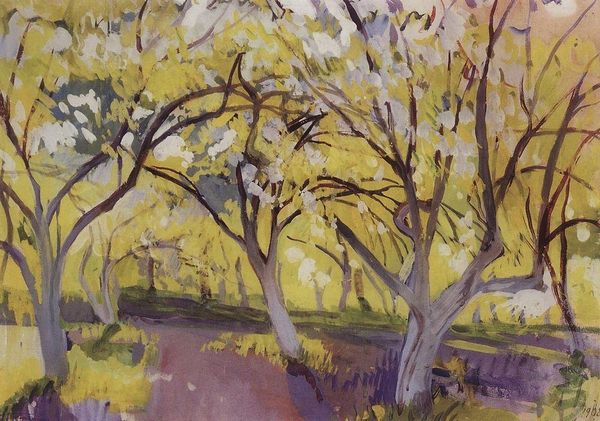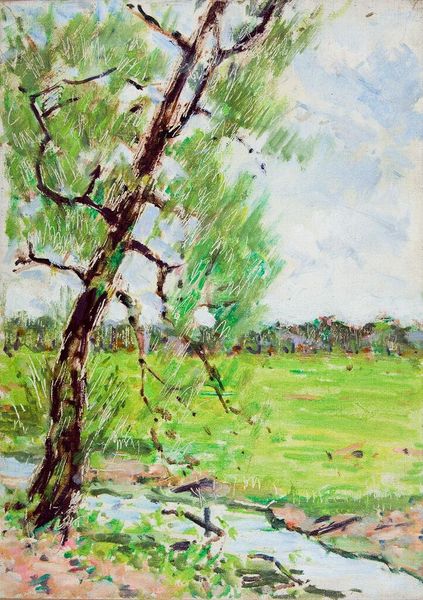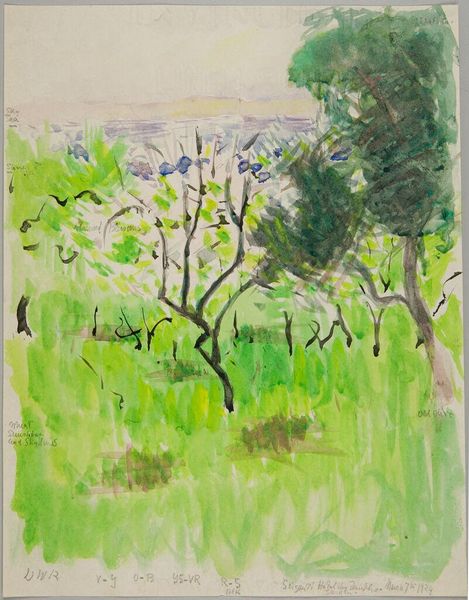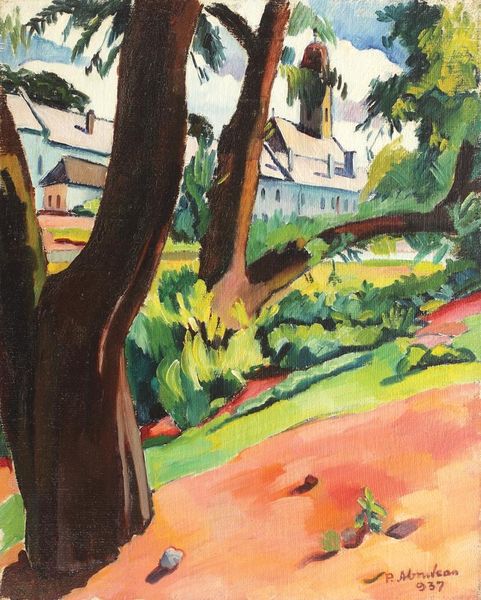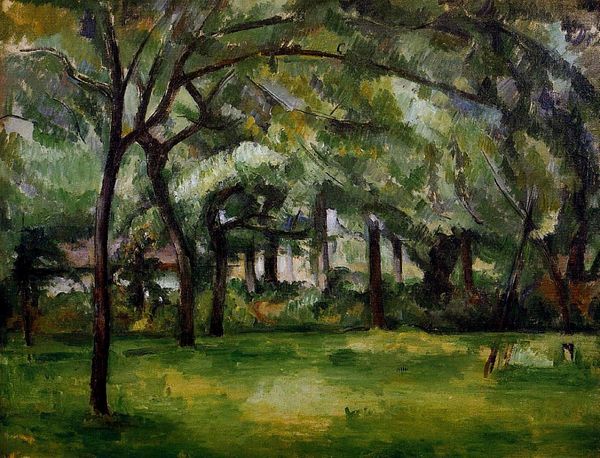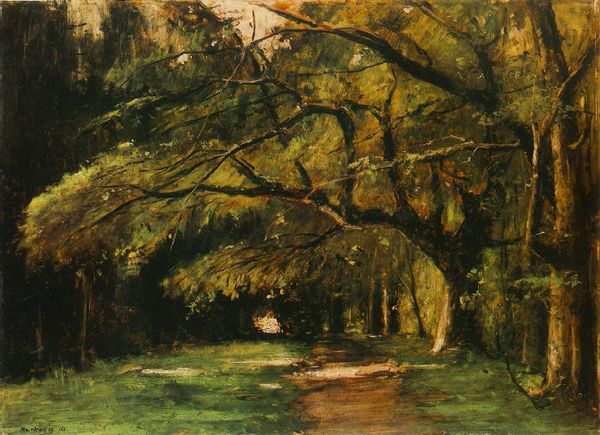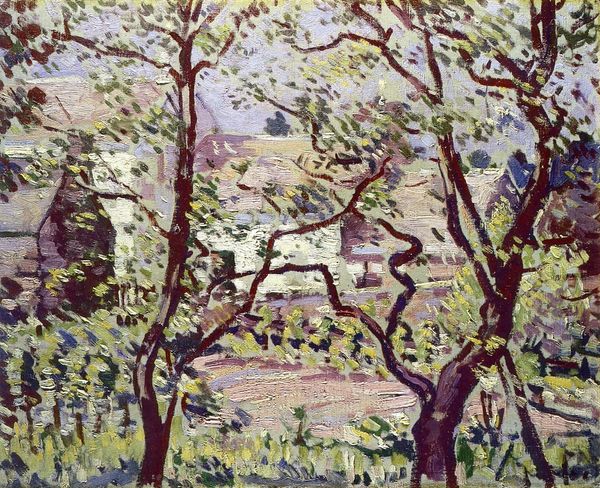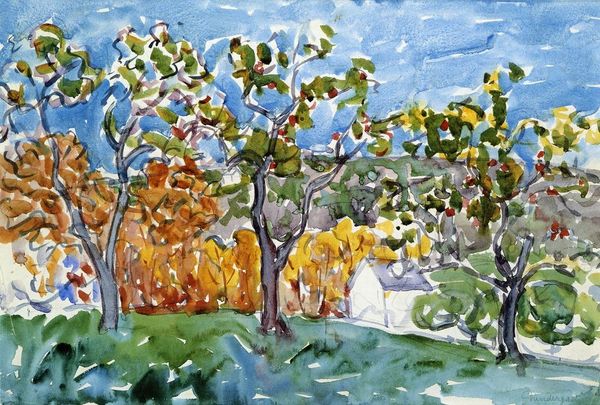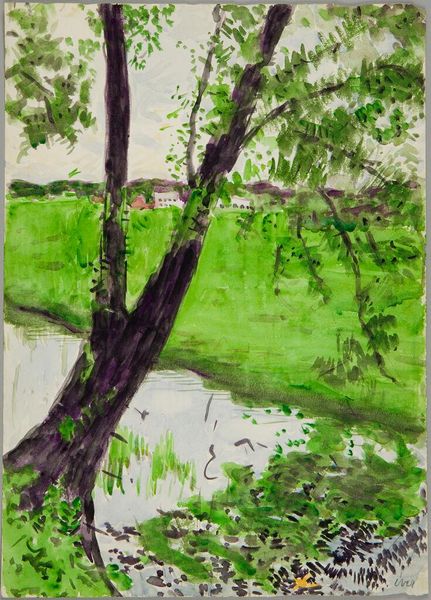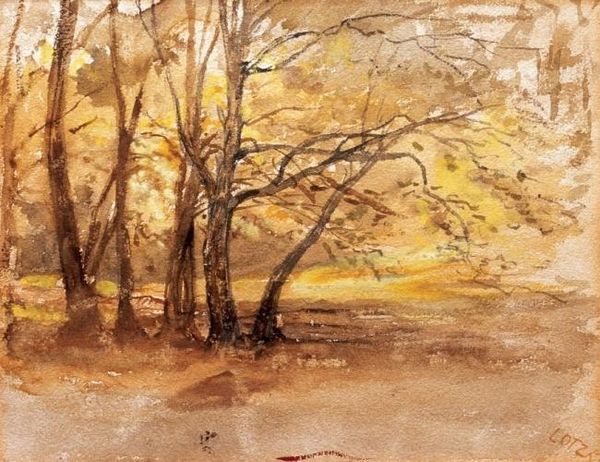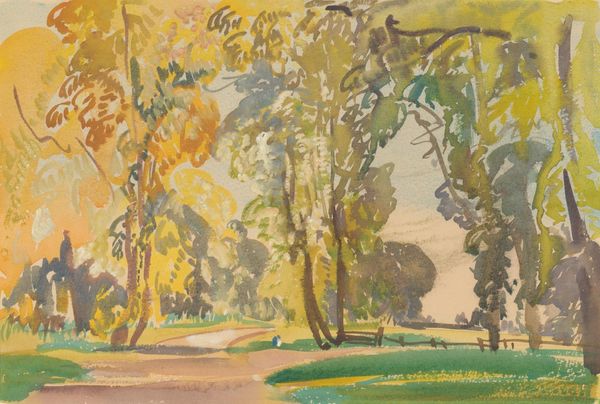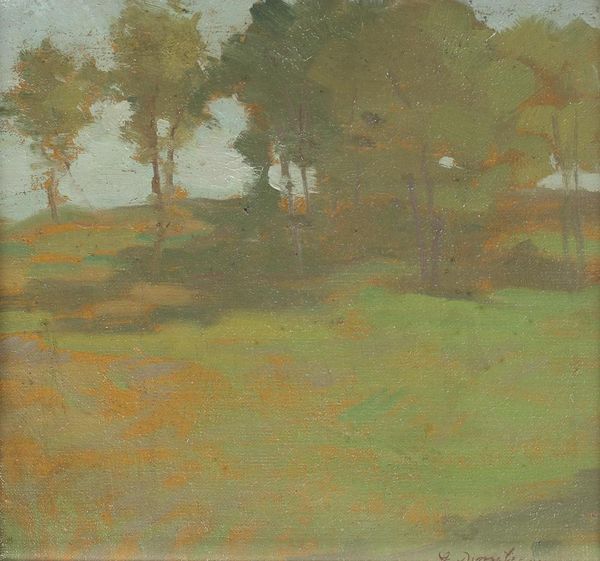
Copyright: Public domain US
Editor: This is "Orchard," painted by Zinaida Serebriakova in 1909, looks like oils on canvas. The impressionistic style gives the scene a dreamlike, almost melancholic feeling. The colors are muted and earthy, really giving that sense of being surrounded by nature. What strikes you about this piece? Curator: I find the piece intriguing precisely because of that perceived melancholy. Serebriakova, painting in 1909, places us on the cusp of significant social and political upheaval in Russia. The impressionistic style, embraced by many at the time, represented a move away from academic painting, but what did that shift signify culturally? Editor: So, you are saying it's more than just aesthetics? Curator: Exactly. The Russian avant-garde, including figures like Serebriakova, were pushing against the established order in art, mirroring a wider dissatisfaction with the Tsarist regime. Even a seemingly innocuous landscape can be read as a quiet rebellion, focusing on the intimate and personal rather than grand historical narratives promoted by the state. Do you see the artist making a deliberate choice to depict a specific point of view? Editor: Maybe. The high horizon line seems unusual. Curator: Indeed, and that forces our focus downward. It's less about a sweeping vista, and more about an enclosed, intimate space. How do you feel this technique works toward this perceived intimacy? Editor: I see that! It feels almost claustrophobic in its beauty, which kind of underscores the historical context you described. Curator: Precisely. Viewing "Orchard" in light of the period helps reveal how even serene landscapes can be intertwined with socio-political undercurrents. Editor: It's incredible how much context shapes the way we understand even a seemingly simple painting. Curator: Absolutely! Understanding the political implications adds new richness.
Comments
No comments
Be the first to comment and join the conversation on the ultimate creative platform.
